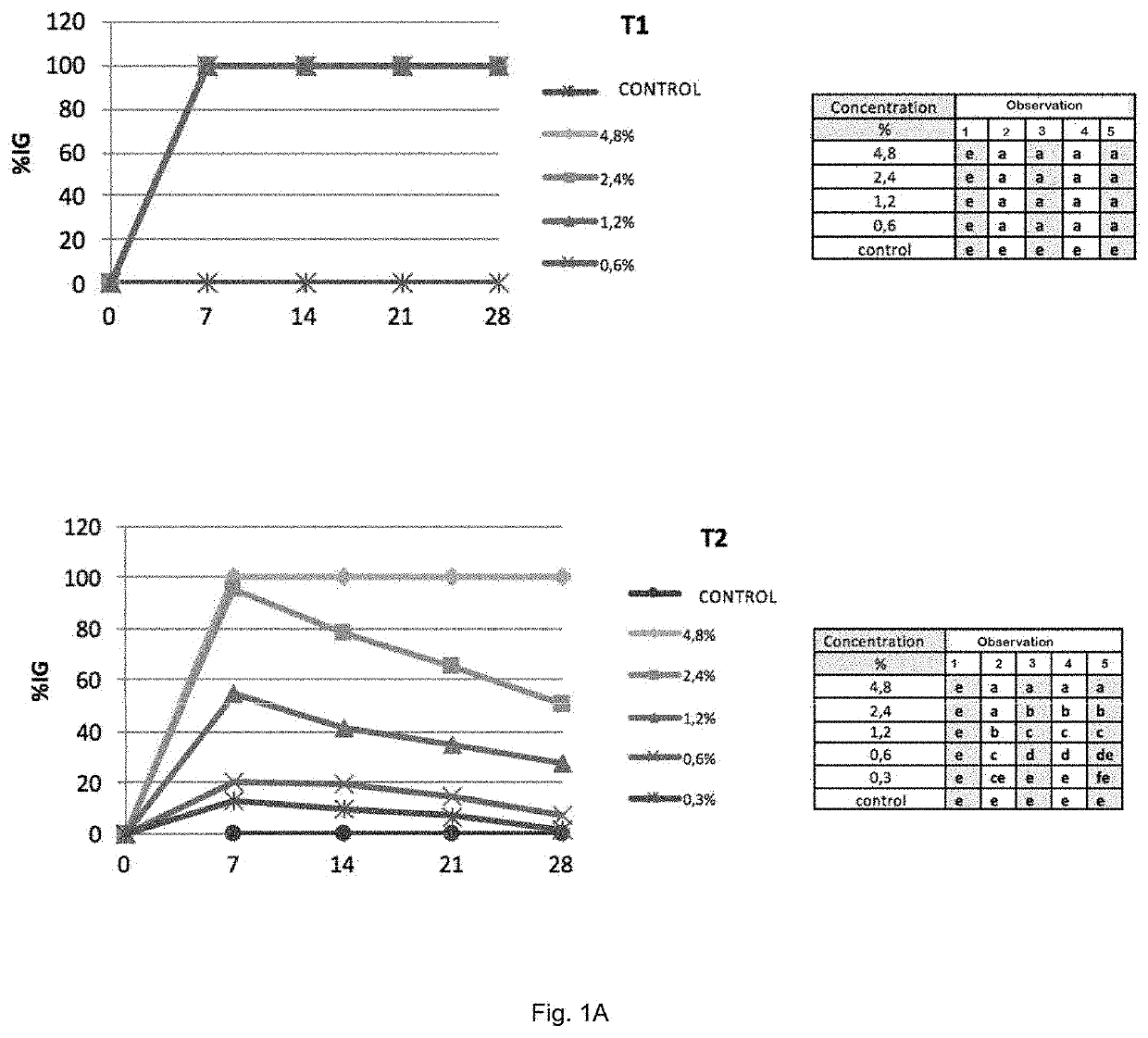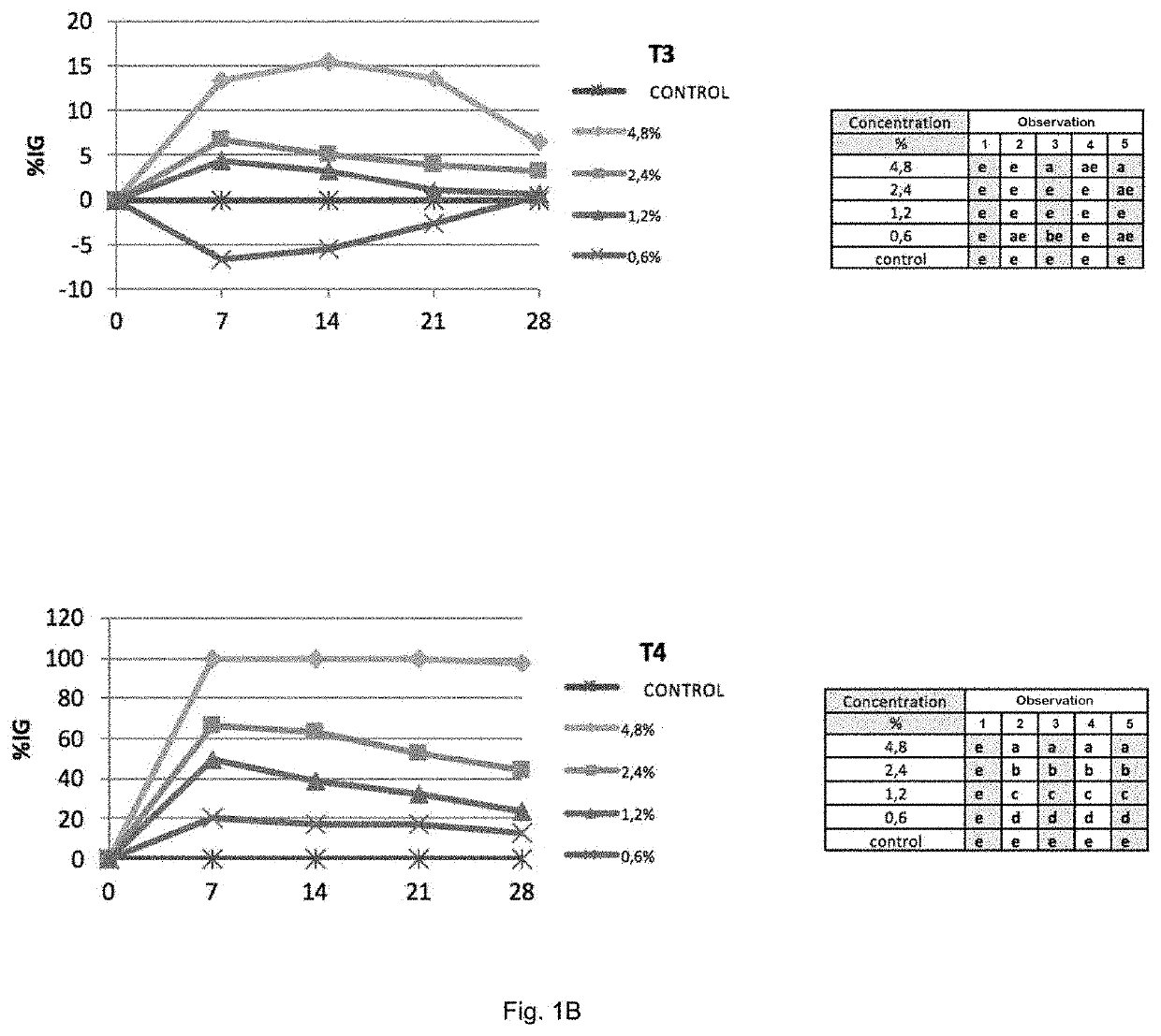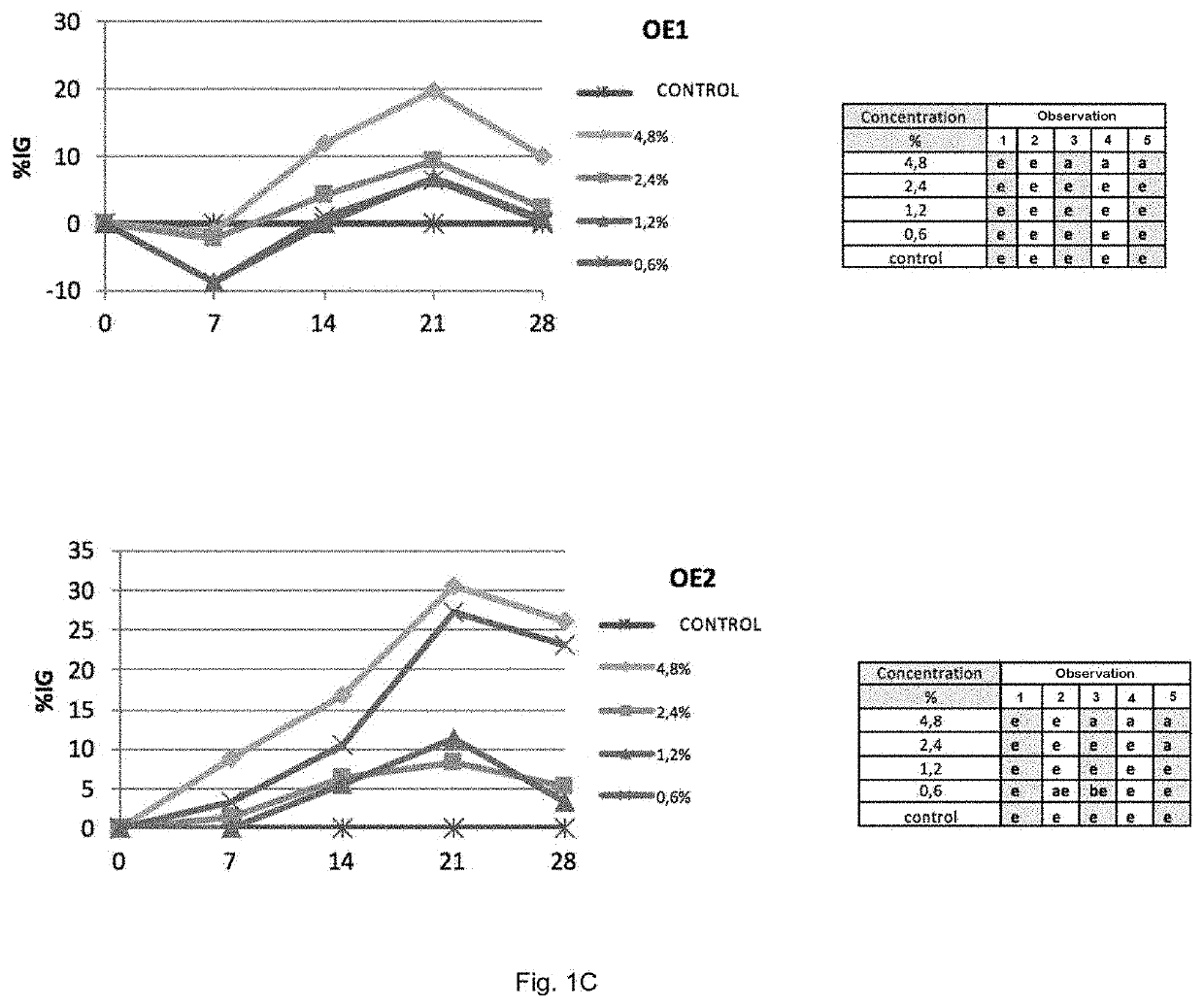Use of hydroxyapatite as a carrier of bioactive substances for treating vascular diseases in plants
a technology of bioactive substances and hydroxyapatite, which is applied in the field of plant vascular diseases treatment with hydroxyapatite, can solve the problems of inapplicability of biological control of i>s. titanus/i>, less efficient control of fd, and more difficult control of still poorly understood vascular diseases, so as to reduce the crystallinity degree of hydroxyapatite and increase the solubility of hydroxyapatite structur
- Summary
- Abstract
- Description
- Claims
- Application Information
AI Technical Summary
Benefits of technology
Problems solved by technology
Method used
Image
Examples
manufacturing example 1
[0120]The hydroxyapatite is synthesised by mixing phosphoric acid with a composition comprising calcium hydroxide and calcium carbonate previously dispersed in a suitable quantity of water.
[0121]The reaction requires about 12 to 48 hours, more particularly about 15 to 30 hours.
[0122]Following the suspension of microcrystals a solution of sulfate (II) pentahydrate and copper chloride is added, previously dissolved in a suitable quantity of water.
[0123]Once these two solutions are combined, they are mixed to allow adsorption of copper ions in the inorganic crystals of hydroxyapatite.
[0124]The adsorption of the copper solution takes about 12 to 72 hours, more particularly from 24 to 60 hours.
manufacturing example 2
[0125]The hydroxyapatite is synthesised by mixing phosphoric acid with a composition comprising calcium hydroxide and calcium carbonate, previously dispersed in a suitable quantity of water.
[0126]The reaction requires about 12 to 48 hours, more particularly about 15 to 30 hours. Following the suspension of microcrystals, a suspension of sulphur and micronized sulphur dispersed in a suitable volume of water is added.
[0127]Once these two solutions are combined, they are mixed to allow adsorption of sulphur ions in the inorganic crystals of hydroxyapatite.
[0128]The reaction requires about 2 to 10 hours, more particularly about 4 to 6 hours.
manufacturing example 3
[0129]The hydroxyapatite is synthesised by mixing phosphoric acid with a composition comprising calcium hydroxide and calcium carbonate, previously dispersed in a suitable quantity of water.
[0130]The reaction requires about 12 to 48 hours, more particularly about 15 to 30 hours. Following the suspension of microcrystals, a suspension of essential oils dispersed in a suitable volume of water is added.
[0131]Once these two solutions are combined, they are mixed to allow adsorption of essential oils in the inorganic crystals of hydroxyapatite.
[0132]The reaction requires about 2 to 10 hours, more particularly about 4 to 6 hours.
PUM
 Login to View More
Login to View More Abstract
Description
Claims
Application Information
 Login to View More
Login to View More - R&D
- Intellectual Property
- Life Sciences
- Materials
- Tech Scout
- Unparalleled Data Quality
- Higher Quality Content
- 60% Fewer Hallucinations
Browse by: Latest US Patents, China's latest patents, Technical Efficacy Thesaurus, Application Domain, Technology Topic, Popular Technical Reports.
© 2025 PatSnap. All rights reserved.Legal|Privacy policy|Modern Slavery Act Transparency Statement|Sitemap|About US| Contact US: help@patsnap.com



